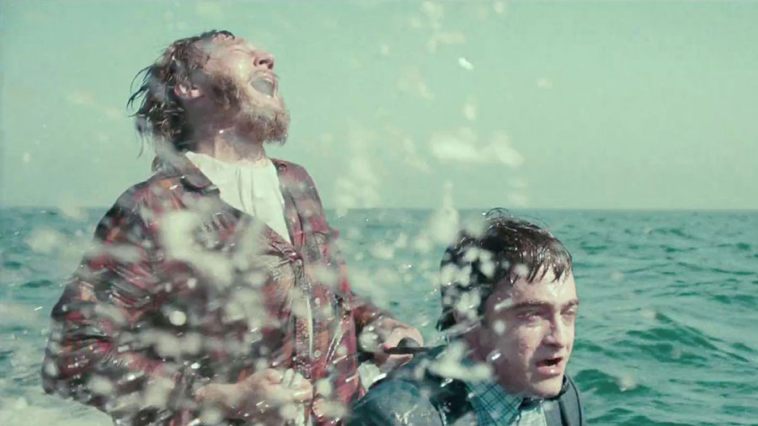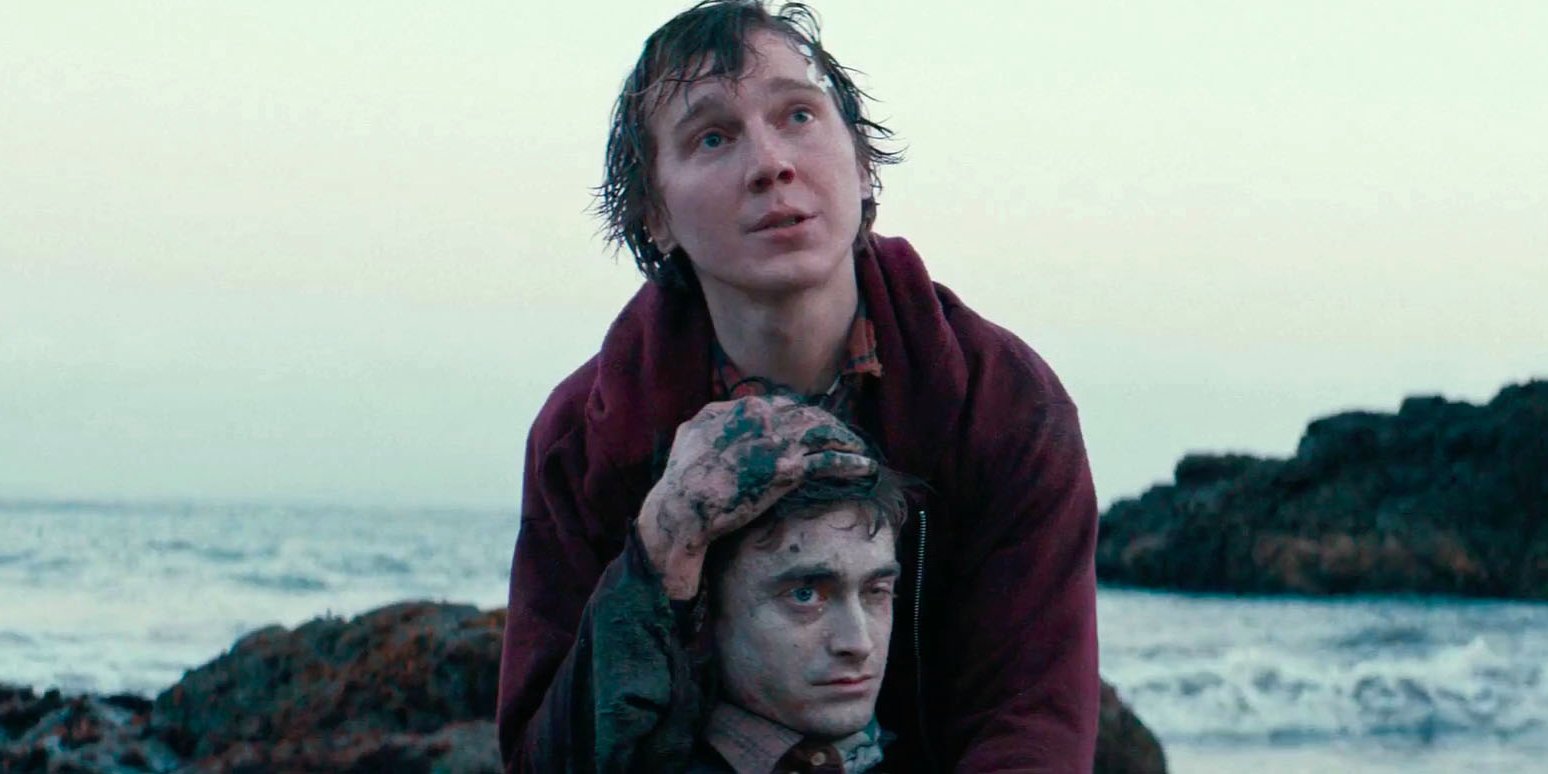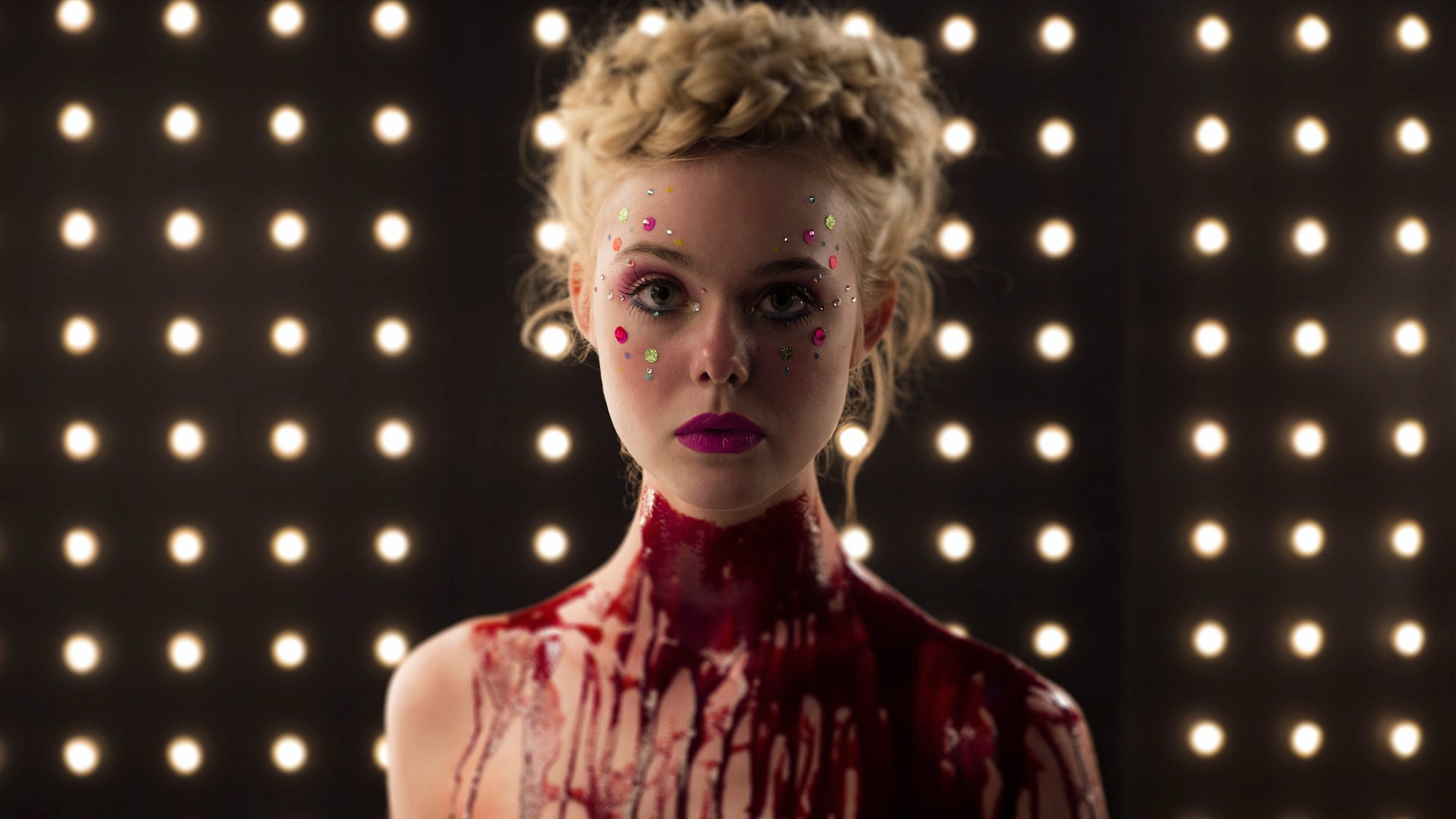In the current cinematic landscape that’s populated by so
many hollow, generic big budget spectacles, sheer eccentricity and
audaciousness is greatly appreciated. And “Swiss Army Man” has a lot of that. Though, eccentricity on
its own isn’t enough to carry a feature length film. Luckily, “Swiss Army Man”
has plenty of heart and charm to go along with its quirkiness.
“Swiss Army Man” (written and directed by Dan Kwan and
Daniel Scheinert, known as “The Daniels” in the credits) is the indie darling
that took the 2016 Sundance film festival by storm. You know, the one about a
farting corpse played by Daniel Radcliffe? A farting corpse that’s befriended
by Paul Dano? Yet, while it does contain a farting corpse played by Daniel
Radcliffe, the picture is much more than that. It’s a small film that reaches
magnificent, sometimes profound heights and manages to pack a lot into its hour
and ninety-five minute run time. “Swiss Army Man” is a wildly funny, endearing,
beautiful exploration of love, friendship, loneliness and depression.
It’s also features a farting corpse played by Daniel
Radcliffe.
The film opens on a desert island somewhere in the Pacific.
Hank (Dano) is stranded and is getting ready to hang himself. That is until he
spots said farting corpse (in a dress coat, blue plaited shirt and slacks) lying
on the beach, farting like there’s no tomorrow. The flatulent corpse, named
Manny, gives Hank a new lease on life. And just when you think “Swiss Army Man”
is going to turn into “Castaway” (with a farting corpse instead of a volleyball)
Hank rides Manny like a jet ski (as you do) to the mainland, right next to a
temperate forest.
Manny slowly begins to take on a life of his own and the two
embark on a journey back to civilization. That’s all I’m going to say plot wise
because “Swiss Army Man” is perhaps the wildest, most unpredictable film I’ve
seen all year. Every time you think you have it figured out it, the movie takes
a left turn and gets progressively weirder.
However, “Swiss Army Man” remains coherent and focused from
start to finish and its never quirky for the sake of being quirky. The farting
corpse gimmick isn’t used simply because its silly and unexpected, it also
serves a purpose, which is a ridiculous thing to type but it’s nevertheless
true. Going back to the Jet Ski scene, Manny’s flatulence helps get Hank off
the island and away from certain death. It literally propels the narrative
forward. Additionally, the act of farting takes on a much greater significance
in the film overall. As peculiar as “Swiss Army Man” gets that peculiarity
either moves the story forward or deepens the characters.
At the same time, The Daniels know when to dial back the
strange and allow for genuine, straightforward drama/emotion to play out
between Hank and Manny. The film tackles weighty issues like anxiety and
depression with delicacy and tenderness. “Swiss Army Man” mixes mundane
earnestness and nutty surrealism almost perfectly.
 The Daniels script is vibrant and intelligent, full of amusing
one-liners (“If you don’t know ‘Jurassic Park’ you don’t know sh-t,”) and
simple yet oddly brilliant insights (when you’re first getting to know a
romantic partner you go to the movies but when you’re more comfortable with
each other you stay in and watch Netflix). It’s also strongly committed to
character. Through their interactions, the layers of both Hank and Manny are
gradually peeled back.
The Daniels script is vibrant and intelligent, full of amusing
one-liners (“If you don’t know ‘Jurassic Park’ you don’t know sh-t,”) and
simple yet oddly brilliant insights (when you’re first getting to know a
romantic partner you go to the movies but when you’re more comfortable with
each other you stay in and watch Netflix). It’s also strongly committed to
character. Through their interactions, the layers of both Hank and Manny are
gradually peeled back.
That being said, The Daniels trust the intelligence of the
audience by not over explaining—letting us to fill in the gaps, while also
allowing for ambiguity in regards to the overall situation. The uncertainty of
the setting gives the picture an otherworldly, at times lyrical feeling.
Meanwhile, we’re unsure if the events taking place are real or imaginary,
though in the long run it doesn’t really matter. The Daniels convincingly
create a world in which a man using another man as a water vehicle seems
perfectly plausible.
None of this would be possible without Dano and Radcliffe.
With his lanky body structure and boyish face, Dano easily slips into the kind
but deeply insecure Hank, giving an understated performance that becomes
increasingly vulnerable as the film goes on. It’s almost impossible to feel completely
unsympathetic towards him. Radcliffe is also sensational--childlike and
introspective in equal measure. He’s simultaneously the comic relief and the
voice of reason. Radcliffe brings warmth and dimension to a cold gassy corpse.
“Swiss Army Man” is easily the strangest film I’ve seen all
year; it’s also one of the best. Yes, I’m talking about the film with the
farting corpse played by Daniel Radcliffe.

